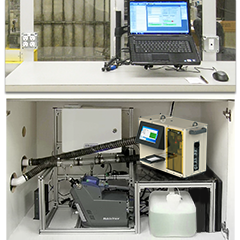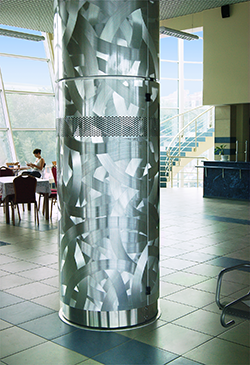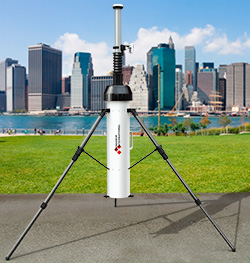CBRN Products

ASAP III™ System for Mailrooms
The ASAP III system continuously monitors for the presence of aerosol biohazards and will identify biological agents ranging from protein toxins to whole cells and spores as frequently as every 20 to 30 minutes. It is an integration at the hardware and software levels, of CBRN International's proven SASS 2300 wetted-wall air sampler technology and the RAPTOR four-channel bioassay system.
Learn more about ASAP III for Mailroom Applications

ASAP V™ for Critical Infrastructure Protection
Urban infrastructures worldwide are coming under increasing threat from vandals, gangs, and terrorists. The ASAP V for Critical Infrastructure Protection is a modular, multi-sensor surveillance system designed for subways and other high-value/high-risk areas. Sensor modules are available that can detect a wide range of threats, from the presence of nuclear, biological and chemical agents, to smoke and fire.
Learn more about ASAP V for Critical Infrastructure Protection
Remote sensor nodes for cbrn monitoring
CBRN International’s Remote Sensor Node is a portable CBRN monitoring device suitable for the detection of toxic gases, aerosolized biological agents, and nuclear materials. Some sensors are mounted within its tough cylindrical aluminum shell of 20 cm diameter and 1 meter height, while other sensors, such as video or thermal IR cameras, can be connected to the node via wireless.
Learn more about the Remote Sensor Node
Flying UAV Laboratory (COTS system)
CBFRN International has developed a pioneering UAV-based product called the "Flying Laboratory" that has full CBRN monitoring capabilities. A second-generation ion mobility spectrometer (IMS) is mounted onboard to provide toxic gas detection. Up to 20 chemical warfare agents and toxic industrial gases can be detected at part per billion to part per million concentrations. A UV particle fluorometer is used to detect any unusually high biological aerosol levels, and a gamma spectrometer is used in combination with two Geiger counters to detect and identify nuclear materials and monitor radiation levels. One of the Geiger tubes is used for monitoring general background radiation levels, while the second, capable of detecting either alpha, beta or gamma radiation, is mounted so that it monitors radiation emitted from particulates captured by an aerosol sampling filter included in the payload.
Learn more about the Flying UAV Laboratory




